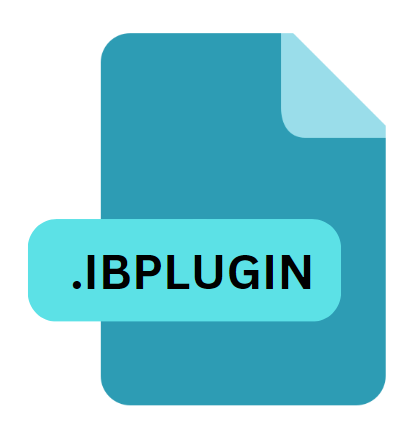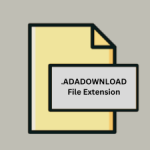.IBPLUGIN File Extension

Interface Builder Plug-in
| Developer | Apple |
| Popularity | |
| Category | Plugin Files |
| Format | .IBPLUGIN |
| Cross Platform | Update Soon |
What is an IBPLUGIN file?
.IBPLUGIN files are associated with Interface Builder, a graphical user interface (GUI) design tool primarily used in macOS and iOS development environments.
These files serve as plug-ins, extending the capabilities of Interface Builder by providing additional design elements, controls, or functionalities.
Essentially, they enable developers to augment the standard set of tools offered by Interface Builder with custom components tailored to their specific project requirements.
More Information.
The concept of plug-ins has been integral to Interface Builder since its inception. Early versions of Interface Builder provided limited extensibility options, primarily through Interface Builder palettes, which allowed developers to add custom controls and views to the tool’s interface.
As the complexity of software projects increased, there arose a need for more sophisticated plug-in architectures to accommodate a wider range of customization options.
.IBPLUGIN files were introduced to address this need, enabling developers to package their custom components, inspectors, or palettes into self-contained modules that could seamlessly integrate with Interface Builder.
Origin Of This File.
The genesis of .IBPLUGIN files can be traced back to the evolution of Interface Builder itself. Originally developed by NeXT Computer, Interface Builder became an integral part of the macOS and iOS development toolkit following Apple’s acquisition of NeXT in 1996.
Over the years, as the demand for customized UI components grew, developers sought ways to enhance Interface Builder’s functionality beyond its native capabilities.
Thus, .IBPLUGIN files emerged as a means to extend and enrich the design experience within Interface Builder.
File Structure Technical Specification.
.IBPLUGIN files are essentially bundles or packages containing the necessary resources and metadata to extend Interface Builder’s functionality. The internal structure of an .IBPLUGIN file typically includes:
- Binary Executables: These are compiled code files containing the actual implementation of the plug-in’s functionality. Depending on the nature of the plug-in, these binaries may include custom UI controls, inspectors, actions, or other components.
- Interface Builder Integration: .IBPLUGIN files contain metadata that Interface Builder uses to recognize and load the plug-in into its interface. This metadata includes information such as the plug-in’s name, version, supported Interface Builder versions, and compatibility flags.
- Resource Files: These comprise any additional resources required by the plug-in, such as images, nib files (Interface Builder’s native file format), localization files, or configuration files.
- Documentation: Some .IBPLUGIN files may include documentation or README files providing instructions on how to use the plug-in and its various features.
How to Convert the File?
Converting .IBPLUGIN files typically involves extracting the contents of the plug-in bundle and, if necessary, recompiling the source code for compatibility with different versions of Interface Builder.
Conversion may not always be straightforward due to differences in plug-in APIs or dependencies between different versions of Interface Builder.
Here are some general steps to convert an .IBPLUGIN file:
- Extract the Contents: Use a file archiving tool to extract the contents of the .IBPLUGIN file to a local directory.
- Review Dependencies: Check for any dependencies or external libraries required by the plug-in and ensure they are compatible with the target version of Interface Builder.
- Recompile Source Code: If the .IBPLUGIN file includes source code, recompile it using the appropriate build settings and compiler flags for the target version of Interface Builder.
- Update Metadata: Update any metadata or configuration files to reflect changes in the plug-in’s compatibility or requirements.
Advantages And Disadvantages.
Advantages:
- Customization: .IBPLUGIN files enable developers to tailor Interface Builder to their specific needs by adding custom controls, inspectors, or design tools.
- Modularity: Plug-ins packaged as .IBPLUGIN files are self-contained units, making it easy to distribute and manage custom components across different projects.
- Enhanced Productivity: By extending Interface Builder’s capabilities, .IBPLUGIN files can streamline the UI design process, saving developers time and effort.
Disadvantages:
- Compatibility Issues: .IBPLUGIN files may not be compatible with all versions of Interface Builder, leading to potential compatibility issues when sharing projects or collaborating with other developers.
- Maintenance Overhead: Developing and maintaining .IBPLUGIN files require additional effort, particularly as Interface Builder evolves and introduces changes to its plug-in architecture.
- Security Risks: Like any form of plug-in or third-party extension, .IBPLUGIN files may pose security risks if not obtained from trusted sources or if they contain malicious code.
How to Open IBPLUGIN?
Open In Windows
- .IBPLUGIN files are primarily associated with macOS and iOS development environments and are not directly compatible with Windows.
- You can explore alternative GUI design tools available on Windows, such as Visual Studio with Xamarin for iOS and Android development, which may offer similar extensibility options for custom controls and components.
Open In Linux
- Similar to Windows, .IBPLUGIN files are not natively supported on Linux.
- Developers working on Linux can use cross-platform GUI design tools like Qt Creator or GTK to create UI components that can be integrated into macOS and iOS projects using Interface Builder.
Open In MAC
- .IBPLUGIN files can be opened directly in Interface Builder, which is part of Apple’s Xcode development suite.
- Simply double-click the .IBPLUGIN file, and Interface Builder should recognize and load the plug-in into its interface automatically.
Open In Android
- .IBPLUGIN files are not compatible with Android development environments.
- Instead, developers can explore Android-specific UI design tools such as Android Studio’s Layout Editor or third-party tools like Adobe XD or Sketch for creating custom UI components.
Open In IOS
- .IBPLUGIN files can be integrated into iOS development projects using Interface Builder, which is part of Xcode.
- Add the .IBPLUGIN file to your Xcode project’s resources directory, and Interface Builder will recognize and allow you to use the custom UI components provided by the plug-in.













